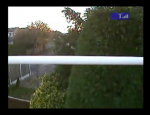Hat sich jemand im Forum vielleicht schon einmal mit diesem Gerät auseinandergesetzt?

Gibt es hier für GBP 100,- zu erwerben. Ich hatte mit dem Händler schon eine kurze Korrespondenz, weil ich die Frage nach einem Datenblatt gestellt hatte. Die Antwort war etwas mager:
Ich finde es etwas komisch, dass es kein PDF-Datenblatt gibt. Kann jemand vielleicht aus der Abbildung einen Clone erkennen? Hat Simon recht damit, dass im 2.4GHz Band für digitalen Funk 100mW erlaubt sind?
Danke und Gruß,
KritzelKratzel

Gibt es hier für GBP 100,- zu erwerben. Ich hatte mit dem Händler schon eine kurze Korrespondenz, weil ich die Frage nach einem Datenblatt gestellt hatte. Die Antwort war etwas mager:
firstpersonview.co.uk hat gesagt.:
Sorry we only have the paper manual.
The device is basically two units, a tx and an rx. There is a break out cable at each end to give you RCA composite input and output at the other end.
The device uses FHSS and two devices "bind" to one another. Only a bound device can receive the image (unlike analogue).
The transmitter is 100mW and CE and FCC approved. The legal limit for analogue is 10mW on 2.4GHz.
There is a signal strength indicator on the image as you'll see on my test video.
If the signal is poor this digital system starts to drop frames and on a really poor signal, or if the tx is turned off, it freezes on the last good frame. This means it is best suited to non-fpv applications - ie as a "viewfinder" for an aerial photography system. Aerial photography is usually quite short range because it's more about the angle of the shot, than the distance from the operator - which again makes this system most suited to that application.
I hope this gives you some more idea about the product.
All the best
Simon
The device is basically two units, a tx and an rx. There is a break out cable at each end to give you RCA composite input and output at the other end.
The device uses FHSS and two devices "bind" to one another. Only a bound device can receive the image (unlike analogue).
The transmitter is 100mW and CE and FCC approved. The legal limit for analogue is 10mW on 2.4GHz.
There is a signal strength indicator on the image as you'll see on my test video.
If the signal is poor this digital system starts to drop frames and on a really poor signal, or if the tx is turned off, it freezes on the last good frame. This means it is best suited to non-fpv applications - ie as a "viewfinder" for an aerial photography system. Aerial photography is usually quite short range because it's more about the angle of the shot, than the distance from the operator - which again makes this system most suited to that application.
I hope this gives you some more idea about the product.
All the best
Simon
Danke und Gruß,
KritzelKratzel



